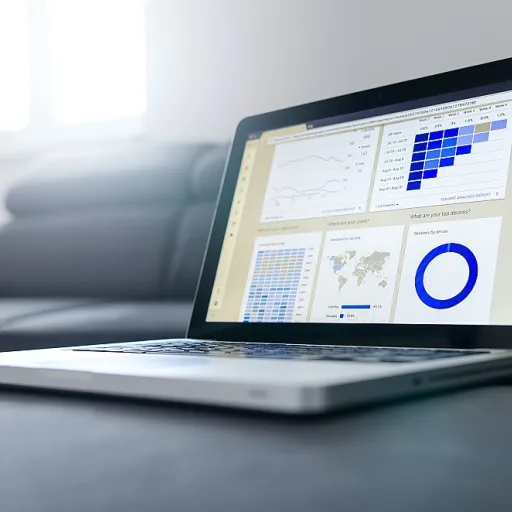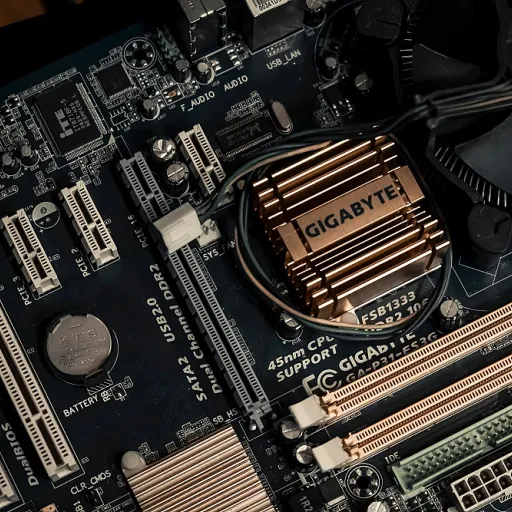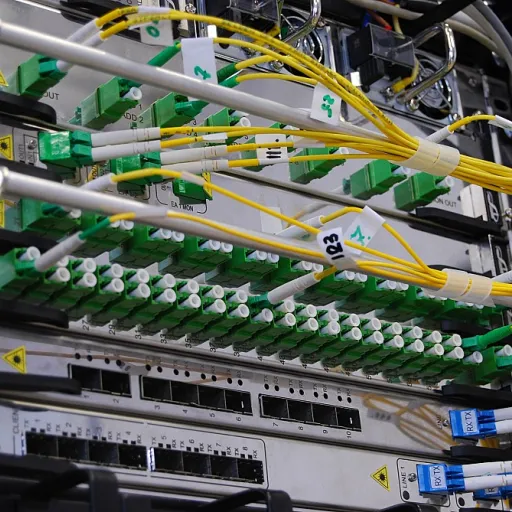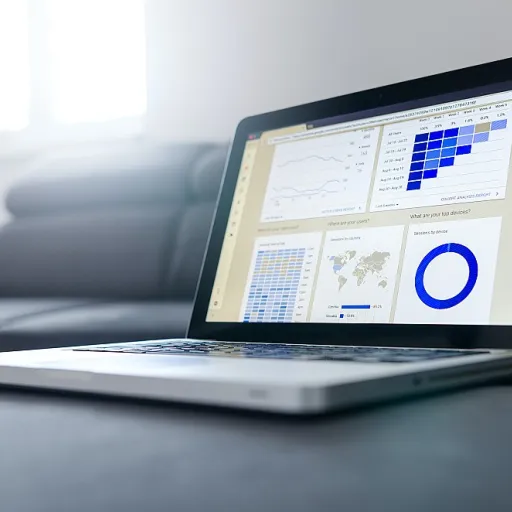
The evolving role of software in supply chain management
The Transformative Influence of Software on Supply Chain Management
The automotive industry is undergoing a significant transformation, with software playing a pivotal role in reshaping supply chain management. As automakers strive for efficiency and precision, software solutions are becoming indispensable in managing complex logistics and production networks. The integration of advanced software systems is enabling real-time visibility across the supply chain, allowing tier suppliers to optimize their operations and ensure timely delivery of auto parts.
In the realm of automotive manufacturing, the need for high-quality components and on-time delivery is paramount. Software solutions are facilitating better communication between suppliers and automakers, enhancing the overall quality management process. This is particularly crucial as the industry shifts towards electric vehicles, which require a different set of raw materials and components. By leveraging software, tier suppliers can better manage their inventory and production schedules, minimizing disruptions and ensuring a steady flow of parts.
Moreover, the adoption of software in supply chain management is not just about efficiency; it's also about adapting to the evolving demands of the industry. As the automotive sector continues to innovate, the role of software in managing the supply chain will only grow. For those interested in enhancing business efficiency, exploring vendor onboarding solutions can provide valuable insights into optimizing supply chain strategies. Enhancing business efficiency with vendor onboarding solutions is a crucial step in this direction.
As we delve deeper into the challenges of integrating software with traditional supply chains, it becomes evident that the future of the automotive supply chain strategy will heavily rely on the seamless integration of technology. This integration will not only improve logistics solutions but also redefine the network design, ensuring long-term sustainability and competitiveness in the industry.
Challenges in integrating software with traditional supply chains
Integrating Software with Traditional Supply Chains
The integration of software into traditional supply chains presents a unique set of challenges for the automotive industry. As automakers and tier suppliers strive to enhance efficiency and visibility, they must navigate the complexities of blending cutting-edge technology with established processes.
One of the primary challenges is the alignment of software solutions with existing logistics and production systems. Many automotive suppliers rely on legacy systems that may not easily interface with modern software applications. This can lead to disruptions in the supply chain, affecting everything from raw material procurement to the delivery of auto parts.
Moreover, the automotive manufacturing sector often deals with a vast network of tier suppliers, each with its own set of systems and protocols. Ensuring seamless communication and data exchange across this network is crucial for maintaining quality and on-time delivery. However, achieving this level of integration requires significant investment in both time and resources.
Another hurdle is the management of real-time data. While software solutions offer the promise of enhanced visibility, the sheer volume of data generated can be overwhelming. Automotive industry supply chains must develop robust data management strategies to harness this information effectively, ensuring that it contributes to long-term strategic goals rather than becoming a source of confusion.
Finally, the shift towards electric vehicles and the increasing complexity of auto parts further complicate the integration process. As the industry evolves, tier suppliers must adapt their software solutions to accommodate new components and manufacturing techniques, all while maintaining the high standards of quality and efficiency expected by automakers.
For more insights on how software solutions can be integrated into supply chains, consider exploring understanding SaaS email solutions and their operational dynamics.
Leveraging AI and machine learning for supply chain optimization
Harnessing AI and Machine Learning for Enhanced Supply Chain Performance
In the rapidly evolving landscape of the automotive industry, the integration of AI and machine learning into supply chain management is proving to be a game-changer. These technologies are not just buzzwords; they are pivotal in transforming how tier suppliers and automakers manage logistics, production, and quality control.
AI and machine learning offer unprecedented real-time visibility into supply chain operations. By analyzing vast amounts of data, these technologies can predict potential disruptions, optimize freight routes, and ensure timely delivery of auto parts. This predictive capability is crucial for maintaining the delicate balance between supply and demand, especially in the face of unexpected challenges like raw material shortages or sudden shifts in consumer preferences.
Moreover, AI-driven analytics enhance the quality management processes within automotive manufacturing. By continuously monitoring production lines, AI systems can detect anomalies in components before they become significant issues, thus reducing waste and improving overall product quality. This level of precision is essential for tier suppliers aiming to meet the stringent standards set by automakers.
Machine learning algorithms also play a vital role in optimizing network design and logistics solutions. By learning from historical data, these algorithms can suggest the most efficient routes and methods for transporting automotive parts, thereby reducing costs and improving time delivery. This optimization is particularly beneficial for electric vehicles, where the timely supply of specialized components is critical.
As the automotive industry continues to embrace digital transformation, the role of AI and machine learning in supply chain management will only grow. These technologies not only enhance operational efficiency but also provide a competitive edge in an industry where innovation is key to success.
The impact of IoT on tier 1 supply chain strategies
Revolutionizing Supply Chain Visibility with IoT
The integration of the Internet of Things (IoT) into tier 1 supply chain strategies is transforming the automotive industry. IoT devices provide real-time visibility into every aspect of the supply chain, from raw materials to the delivery of auto parts. This enhanced visibility allows automakers and tier suppliers to monitor the movement of components and manage disruptions more effectively.
With IoT, automotive suppliers can track the quality and condition of parts throughout the logistics network. Sensors embedded in freight containers and vehicles provide data on temperature, humidity, and location, ensuring that components meet the stringent quality standards required in automotive manufacturing. This level of monitoring is crucial for maintaining the integrity of the supply chain, especially when dealing with sensitive materials or electric vehicles.
Enhancing Logistics Solutions and Network Design
IoT also plays a pivotal role in optimizing logistics solutions and network design. By collecting and analyzing data from various points in the supply chain, companies can identify bottlenecks and inefficiencies. This data-driven approach enables tier suppliers to make informed decisions about inventory management, production schedules, and time delivery, ultimately reducing costs and improving service levels.
Moreover, IoT facilitates better collaboration between suppliers and automakers. Real-time data sharing allows for more accurate demand forecasting and production planning, minimizing the risk of overproduction or stockouts. This collaborative approach is essential for maintaining a resilient and responsive supply chain in the face of long-term industry supply challenges.
Addressing Cybersecurity Concerns
While the benefits of IoT in supply chain management are significant, they come with cybersecurity concerns. Protecting the vast amounts of data generated by IoT devices is critical to prevent unauthorized access and potential disruptions. As the automotive industry continues to embrace IoT, robust cybersecurity measures must be implemented to safeguard the integrity of the supply chain.
In conclusion, the impact of IoT on tier 1 supply chain strategies is profound, offering enhanced visibility, improved logistics solutions, and more efficient network design. However, addressing cybersecurity concerns remains a priority to fully realize the potential of IoT in the automotive supply chain.
Cybersecurity concerns in software-driven supply chains
Safeguarding the Digital Backbone
As the automotive industry increasingly relies on software to manage complex supply chains, cybersecurity has become a critical concern. The integration of software-driven solutions in tier 1 supply chains offers numerous benefits, such as enhanced visibility and real-time data access. However, these advancements also expose the network to potential cyber threats that could disrupt production and logistics.
Automotive suppliers and manufacturers must prioritize cybersecurity to protect sensitive data and ensure the integrity of their operations. This involves implementing robust security protocols and continuously monitoring for vulnerabilities. The automotive supply chain is particularly vulnerable due to its reliance on interconnected systems and the exchange of information between multiple stakeholders, including suppliers, automakers, and logistics providers.
Addressing Vulnerabilities in the Supply Network
One of the main challenges in securing software-driven supply chains is the diversity of systems and technologies used by different tier suppliers. Each component of the supply chain, from raw material procurement to final assembly, involves various software applications that must be seamlessly integrated. This complexity can create weak points that cybercriminals may exploit.
To mitigate these risks, automotive manufacturers and their suppliers should adopt a comprehensive cybersecurity strategy. This includes regular security audits, employee training, and the implementation of advanced threat detection systems. By fostering a culture of security awareness, the industry can better protect itself against potential disruptions.
Ensuring Long-Term Resilience
In the long term, the automotive industry must also consider the implications of emerging technologies, such as electric vehicles and IoT, on cybersecurity. As these technologies become more prevalent, they will introduce new vulnerabilities that require proactive management. By staying ahead of these trends and continuously evolving their cybersecurity measures, automotive companies can ensure the resilience of their supply chains.
In conclusion, while the integration of software in supply chain management offers significant advantages, it also necessitates a heightened focus on cybersecurity. By addressing these concerns, the automotive industry can safeguard its operations and maintain the quality and reliability of its supply chain strategies.
Future trends in auto tier 1 supply chain strategies
Emerging Trends Shaping the Future
The automotive supply chain is on the brink of significant transformation, driven by technological advancements and evolving market demands. As we look ahead, several trends are poised to redefine how tier 1 suppliers operate within the industry supply network.
Electric Vehicles and Sustainability
With the automotive industry shifting towards electric vehicles, tier suppliers must adapt their strategies to accommodate new components and raw materials. This transition not only impacts the production of auto parts but also necessitates a reevaluation of logistics solutions to ensure timely delivery and quality management. The focus on sustainability is also pushing suppliers to innovate in their manufacturing processes, reducing environmental impact while maintaining efficiency.
Enhanced Visibility and Real-Time Data
Real-time visibility across the supply chain is becoming increasingly critical. Leveraging advanced software solutions, tier suppliers can monitor freight movements, manage disruptions, and optimize logistics in real time. This capability allows for more agile decision-making, ensuring that automakers receive components on time and with the desired quality.
Network Design and Resilience
As disruptions become more frequent, the importance of a resilient supply chain network design cannot be overstated. Tier suppliers are investing in robust systems that can withstand unforeseen challenges, ensuring continuity in the supply of automotive parts. This involves strategic partnerships and diversifying supplier bases to mitigate risks associated with single-source dependencies.
Integration of Advanced Technologies
Integrating AI and machine learning into supply chain management is no longer optional but a necessity. These technologies provide tier suppliers with predictive analytics capabilities, enabling them to anticipate demand fluctuations and adjust production schedules accordingly. The impact of IoT on supply chain strategies further enhances this integration, offering unprecedented levels of connectivity and data exchange.
Cybersecurity in the Digital Age
As supply chains become more software-driven, cybersecurity concerns are paramount. Protecting sensitive data and ensuring the integrity of digital systems is crucial for maintaining trust and reliability within the automotive manufacturing sector. Tier suppliers must invest in robust cybersecurity measures to safeguard their operations against potential threats.
In conclusion, the future of auto tier 1 supply chain strategies lies in embracing technological advancements and fostering a culture of innovation. By staying ahead of these trends, suppliers can ensure long-term success and resilience in an ever-evolving industry landscape.




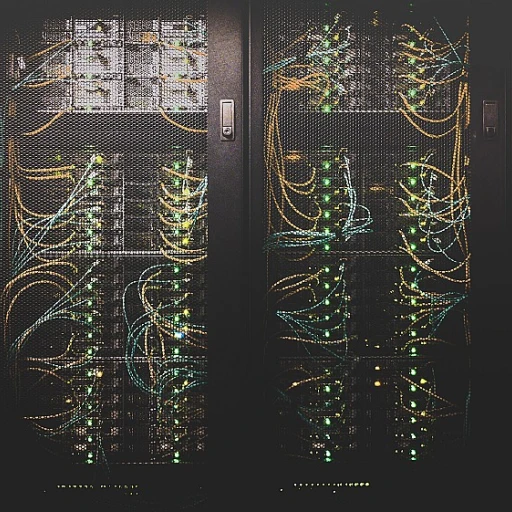
-large-teaser.webp)



